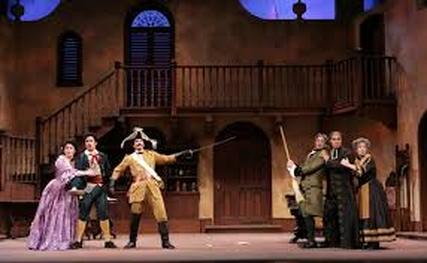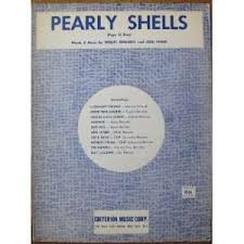If you do have more information of this kind concerning these or other melodies, please contact accordeonworld to let us know. Take note that we are trying to write down musical histories related to all countries, without any discrimination or preference.
The history behind the melody
Knowing more about a song not only is something nice to know, but, in some occasions it also allows us to play the melody with more feeling, with more "knowhow". Not each melody has a story behind it, but in order to understand the piece better, where possible, we do give the lyrics. Knowing the words, creates the possibility to express them with our instrument.
|
You can click the links or scroll down the page in order to find out more about following melodies:
Amazing Grace Auprès de ma blonde Aura Lee Colonel Bogey March Danny Boy Drina March For he's a jolly good fellow Glen of Aherlow Greensleeves Happy Birthday to you Hatikvah It's a long way to Tipperary Lily Marleen Orange Blossom Special Sarie Marijs (Ellie Rhee) The Finnish Polka or Säkkijärven Polkka The Yellow Rose of Texas The water is wide Tom Dooley Tum Balalaika Warszavianka We'll meet again Whiskey in the jar Zorba's Dance Scroll down for these melodies: Yankee Doodle Lily Marleen The Barber of Sevilla Dominique, -nique, -nique Taps Pearly shells |
|
Yankee Doodle
For as long and as far as we know, the song Yankee Doodle is as American as the Stars and Stripes. Everybody, young or old, does know and sing it. Yet the words of this song were once written as an insult to the Americans. But, this was an insult that backfired. Traditions says that in 1755 a British doctor, Richard Schuckberg, wrote new words to the song. He referred to the American fighter as a "doodle", a country hick, and a dandy, a conceited jerk. It is possible that the term "Yankee" comes from the language of the Dutch settlers "Jantje", which means "little Jan". Anyhow, the term was used to mock all American colonists. From 1754 till 1763 the Brittish troops were fighting, together with the American colonists, against the French and their Indian allies. In 1770 tension rose between the American colonists and the Brittish people: the Brittish government asked taxes from the Americans in order to make them pay their share of all the Brittish war expences. The Americans began to talk about rebellion. In 1775 the feud came to a head when 700 Brittish soldiers marched out of Boston: it was their mission to snatch weapons and ammunition they believed the Americans had hid in the countryside. Great Brittain was seen as the most powerfull army in the world, so the soldiers felt no fear for the American colonial farmers who volonteered as soldiers. |
On their way, the Brittish fifers and drummers teased the American colonists by playing Yankee Doodle. In confrontations colonists were killed and all weapons and ammunition the Brittish found, were distroyed. After their mission, the Brittish troops had to march back to safety in Boston. On their way back, they were counterattacked by the American colonists who returned the musical insult: they sang Yankee Doodle as the Brittish troops retreated. This was the start of American revolution and soon Yankee Doodle was seen as the unofficial anthem of what would be the American Continental Army.
Click the link for Yankee Doodle
Sources: www.artsedge.kennedy-center.com
Click the link for Yankee Doodle
Sources: www.artsedge.kennedy-center.com
|
The Barber of Sevilla
The Barber of Sevilla is best known through Gioachino Rossini's opera. The opera recounts the first of the plays from the Figaro trilogy by French playwright Pierre Beaumarchais. It is little known that 34 years earlier, in 1782, another composer, Giovanni Paisiello also wrote an opera Il Barbiere di Seviglia based on this first part of the trilogy. Paisiello's opera was a big hit in the musical community and it was seen as his magnus opus. As Rossini composed another version, Paisiello took this as a affront to his own work. In particular, he and his followers were opposed to the use of basso buffo, which is common in comic opera. In 1816, when Rossini's opera Il Barbiere di Seviglia was premiered, the |
supporters of Paisiello attended the premiere, jeering and booing loudly, so that none of the music could be heard, they even sneaked a cat onto the stage.
In this way the first performance of Rossini's Barber turned out to be a real disaster.
In spite of all the support Paisiello got at that time, people forgot about Paisiello's Barber of Sevilla and nowadays nearly nobody knows about it. Rossini's Barber, on the contrary, remains a favourite of the music loving people.
Clich the link to hear Rossini's Barber of Sevilla on accordeon The Barber of Sevilla
Sources: www.en.wikipedia.org, www.listverse.com
In this way the first performance of Rossini's Barber turned out to be a real disaster.
In spite of all the support Paisiello got at that time, people forgot about Paisiello's Barber of Sevilla and nowadays nearly nobody knows about it. Rossini's Barber, on the contrary, remains a favourite of the music loving people.
Clich the link to hear Rossini's Barber of Sevilla on accordeon The Barber of Sevilla
Sources: www.en.wikipedia.org, www.listverse.com
|
Domi-nique, -nique, -nique
The composer/performer of this melody was Soeur Sourire, also called The Singing Nun. She was born in Belgium on 17th of October 1933 as Jeanine Deckers. As a young girl she attended art school, where she developed her musical talents, she learned how to sing and play and how to write her own music. Jeanine Deckers did not come from a very close family, and though she had nothing against marriage, she felt more at ease with convent life. In the years 1950 she joined the Dominican Convent, she changed her name to "Sister Luc-Gabrielle" and took the vow of poverty. But she went on singing and playing the guitar for church groups and she adopted the stage name "Soeur Sourire" (Sister Smile) In this way she was discovered by Philips Record Co, who gave her a contract. All profits from her singing and records were donated to the convent, because she had taken the vow of poverty. In 1963 sister Luc-Gabrielle wrote "Dominique", a tribute to the founder of the Dominican Order. This song would be her only big hit, but it was known and translated all over the world. With "Dominique" she won the Grammy Award for best gospel song that year. In 1964 a taped version of her singing that song was broadcasted on the Ed Sullivan Show, it was the same year The Beatles appeared in the same show. In 1965 MGM turned her life into a movie, with Debbie Reynolds in the titular role. Soeur Sourire wrote most of the music for it. Maybe it was because of all the publicity, but the same year, 1965, Soeur Sourire stopped performing and she concentrated on her studies in the convent. |
In 1966 Soeur Sourire left the convent, she resumed her singing career and adopted the name Luc-Dominique, combining her convent name with the name of her big hit. She joined with a woman, Annie Pescher, and together the owned and operated a school for authistic children.
In the years 1980 the Belgian government said Luc-Dominique owed over 60 000 $ of back taxes on money she had earned during her singing career while being a nun. She had donated all the money and proceeds to the convent, but still the Belgian government wanted her to pay the money nonetheless. In 1985 Luc-Dominique and Annie Pescher together commited suicide. The song which had given her name and fame, caused her complete doom at the end.
The Singing Nun will be remembered by this song, which is remembered chiefly for its refrain:
In the years 1980 the Belgian government said Luc-Dominique owed over 60 000 $ of back taxes on money she had earned during her singing career while being a nun. She had donated all the money and proceeds to the convent, but still the Belgian government wanted her to pay the money nonetheless. In 1985 Luc-Dominique and Annie Pescher together commited suicide. The song which had given her name and fame, caused her complete doom at the end.
The Singing Nun will be remembered by this song, which is remembered chiefly for its refrain:
|
French text:
Dominique, -nique, -nique s'en allait tout simplement, Routier, pauvr' et chantant. En tous chemins en tous lieux il ne parl' que du Bon Dieu, il ne parl' que du Bon Dieu. |
English text:
Domi-nique, -nique, -nique, o'er the land he plods along, and sings a little song. Never asking for reward, he just talkes about the Lord, he just talkes about the Lord |
|
Taps
Taps was composed in 1862 at Harrison's landing in Virginia. The composer Brig. Gen. Daniel Butterfield, Commander of the 3rd Brigade, 1st Devision, V Army, Army of the Potomac during the American Civil War, was dissatisfied with the customary firing of three rifle volleys at the conclusion of burials during battle. He also wanted a less harsh bugle call for ceremonially signaling the end of a soldier's day. So he |
likely altered an older piece known as "Tattoo", a French bugle call used to signal "Lights out", into the call we all know now as "Taps".
One evening in July 1862 Butterfield summoned his brigade's bugler, Private Oliver Wilcox Norton, to his tent. He had written some notes on the back of an envelope, asked the bugler to play them, lengthened some notes, shortened some others, but still retaining the melody in it's first form. After getting it to his satisfaction, he directed the bugler to sound that call for "Taps" thereafter in place of the regulation call. That night the sound was heard far beyond the limits of their brigade. The next day they were visited by several buglers from neighbouring brigades, asking for copies of the music.
Taps was quickly taken up by both sides of the conflict and within months it was being sounded by buglers in both Union and Confederate forces. From then on Taps serves as a vital component in ceremonies honoring military dead. It is also understood as an end-of-day, lights out signal.
When Taps is played at a military funeral it is customary to salute if in uniform, or to place your hand over your heart if not.
Another story about Taps is going, but this is only a legend:
In 1862, during the Civil War, Union Army Captain John Ellicombe was with his men near Harrison's Landing in Virginia. The Confederate army was on the other side of the narrow strip of land. During the night Captain Ellicombe heard the moan of a deadly wounded soldier who was laying on the field. The Captain decided to risk his life and to bring the wounded soldier to his camp for medical attention, whether is was a Confederate or a Union soldier.
On his stomack, Captain Ellicombe crawled through the gunfire, he found the soldier and pulled him towards his campement. As he reached his own lines, he discovered it was a Confederate soldier, but the soldier was dead. As the Captain lit his lantern he could see the face of the dead man. Suddenly he caught his breath: what he saw was the face of his own son. The boy had been studying music in the South when the war broke out. Without telling his father he had joined the Confederate army.
One evening in July 1862 Butterfield summoned his brigade's bugler, Private Oliver Wilcox Norton, to his tent. He had written some notes on the back of an envelope, asked the bugler to play them, lengthened some notes, shortened some others, but still retaining the melody in it's first form. After getting it to his satisfaction, he directed the bugler to sound that call for "Taps" thereafter in place of the regulation call. That night the sound was heard far beyond the limits of their brigade. The next day they were visited by several buglers from neighbouring brigades, asking for copies of the music.
Taps was quickly taken up by both sides of the conflict and within months it was being sounded by buglers in both Union and Confederate forces. From then on Taps serves as a vital component in ceremonies honoring military dead. It is also understood as an end-of-day, lights out signal.
When Taps is played at a military funeral it is customary to salute if in uniform, or to place your hand over your heart if not.
Another story about Taps is going, but this is only a legend:
In 1862, during the Civil War, Union Army Captain John Ellicombe was with his men near Harrison's Landing in Virginia. The Confederate army was on the other side of the narrow strip of land. During the night Captain Ellicombe heard the moan of a deadly wounded soldier who was laying on the field. The Captain decided to risk his life and to bring the wounded soldier to his camp for medical attention, whether is was a Confederate or a Union soldier.
On his stomack, Captain Ellicombe crawled through the gunfire, he found the soldier and pulled him towards his campement. As he reached his own lines, he discovered it was a Confederate soldier, but the soldier was dead. As the Captain lit his lantern he could see the face of the dead man. Suddenly he caught his breath: what he saw was the face of his own son. The boy had been studying music in the South when the war broke out. Without telling his father he had joined the Confederate army.
|
The following morning, heartbroken, Captain Ellicombe asked permission to give his son a full military burial, despite his enemy status. His request was partially granted: he also had asked if he could have a group of army band members play a funeral dirge for his son. This request was turned down as his son was a Confederate soldier. But, out of respect for the father, they said they would give him one musician.
The captain chose a bugler. He asked the bugler to play a series of musical notes he had found on a piece of paper in the pocket of his death son's uniform. His wish was granted. At the funeral sounded "Taps", the melody that is used at all miltary funerals. Click the link to hear Taps, not on accordeon Source: http://www.snopes.com/music/songs/taps.asp |
|
Pearly Shells
"Pearly Shells" was created when Wesley Edwards, the host of the famous radio show "Hawai i calls", put English words to the melody of an old Hawaiian language song. Edwards collaborated with Leon Pober, using the melody line from the locally popular "Pupu´A´O´Ewa". The following story is referred to in the lyrics of the traditional Pupu´A´O´Ewa: "shells of Ewa, throngs of people, coming to learn, the news of the land". The "news of the land" was the discovery of pearl oysters at Pu´Uloa, the Hawaiian name for Pearl Harbor, which was said to be protected by Ka´Ahupahou, the shark godess |
In 1909, the Navy issued a 1.7 thousand contract for construction of the first Pearl Harbor dry dock. Kapuna Kanakeawe, a Hawaiian fisherman, told the contractor to build it in another location as the spot they selected was the home of the shark godess. Works stopped after three months as things kept going wrong. Cement would not pour and the contractor could not pump water out of the dry dock.
February 17, 1913, with a delay of two years on the scedule, opening ceremonies were held. Then the dry dock exploded. One man was killed, 4.000.000$ were lost and four years of work demolished. Another contract was issued in November 1914. As work progressed, the early warning of Kanakeowe was remembered.
Mrs Puahi, a Kahuna, was called and instructed the foreman, David Richards, in the necessary rituals to please Ka´Ahupahou and sefeguard the project. After sacrifices were made, prayers chanted and rituals performed, the project was declared safe. When the bottom was pumped out a skeleton of a 14 foot shark was discovered. Pearl Harbor was also the site of ancient Hawaiian fishponds
Source: http://www.hawaiimusicmuseum.org/news/archive/2003/shells.html
Click the link to hear Pearly Shells on accordeon
February 17, 1913, with a delay of two years on the scedule, opening ceremonies were held. Then the dry dock exploded. One man was killed, 4.000.000$ were lost and four years of work demolished. Another contract was issued in November 1914. As work progressed, the early warning of Kanakeowe was remembered.
Mrs Puahi, a Kahuna, was called and instructed the foreman, David Richards, in the necessary rituals to please Ka´Ahupahou and sefeguard the project. After sacrifices were made, prayers chanted and rituals performed, the project was declared safe. When the bottom was pumped out a skeleton of a 14 foot shark was discovered. Pearl Harbor was also the site of ancient Hawaiian fishponds
Source: http://www.hawaiimusicmuseum.org/news/archive/2003/shells.html
Click the link to hear Pearly Shells on accordeon








